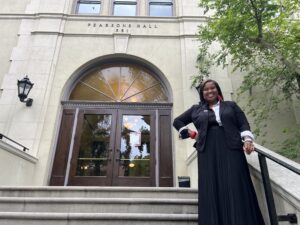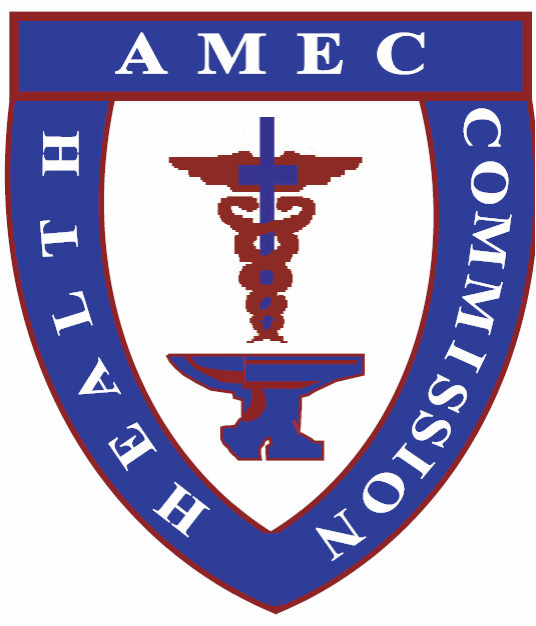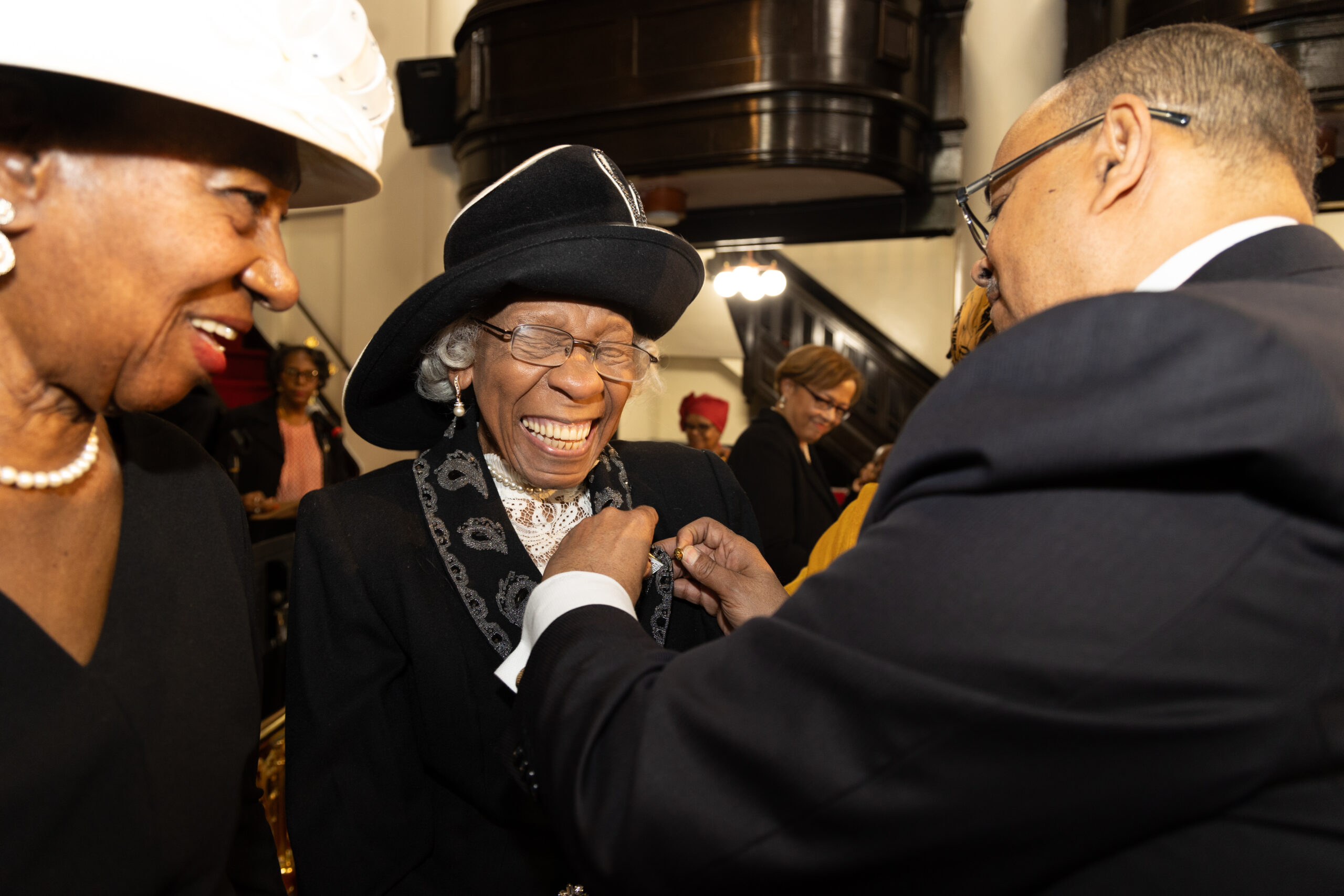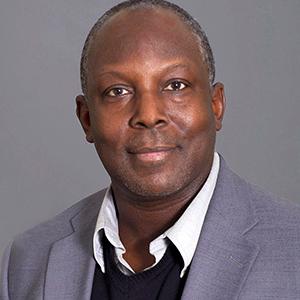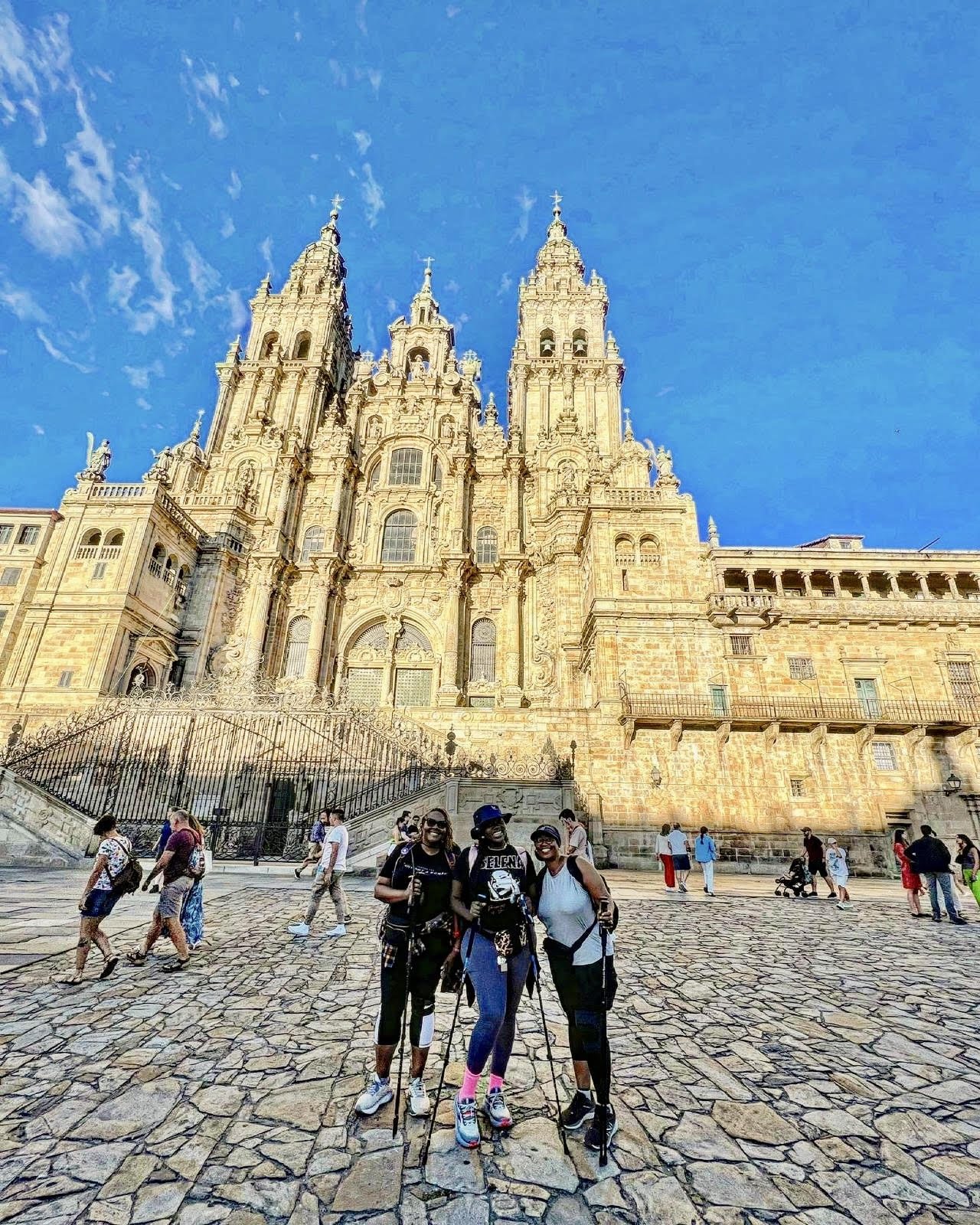Dr. Nikia S. Robert is building a faith-based abolitionist movement centered on Black women
By Kiratiana E. Freelon, Columnist
On a late spring Sunday in May, the Rev. Dr. Nikia S. Robert, an ordained elder in the African Methodist Episcopal Church, swayed to “All I Need is You”— you being the Lord, of course — as she walked to a transparent podium in the Word of Encouragement Church.
“How many of you need a word?” asked the ordained minister, theologian, and social entrepreneur. The southern California congregation where she’s guest-pastoring, 90 percent of them Black women, responded with a well-timed “Yesses.”
She shook her bob, closed her eyes, and proclaimed, “Somebody needs a breakthrough. Somebody needs deliverance. Somebody needs peace.”
However, after reading Luke 1:46-55 and a short prayer, she revealed the sermon’s timely title: “Plan B: The Choice is Yours.” Plan B is the over-the-counter pill that helps prevent pregnancies within 72 hours of unprotected sex. A month after the sermon, the U.S. Supreme Court voted to restrict the federal right to abortion, overturning the landmark case Roe vs. Wade.
Robert wasted no time in her sermon asserting her stance on reproductive choice from the pulpit.
“When Black women are uniquely disadvantaged by racial, gender, and economic inequalities that make it nearly impossible to raise our children and survive, we need autonomy over our bodies to exercise agency and decide what is best for ourselves and our families,” Robert said in front of a congregation that included two daughters, a son, and her husband.
“From now on, all generations will call me blessed; for he who is mighty has done great things for me, and holy is his name,” said Mary in her Magnificat in Luke 48-50.
For Robert, Mary should be honored as an example of someone who used her agency and exercised reproductive choice. She highlighted Mary’s thoughtfulness and independence.
Thus, Robert interpreted Jesus as Mary’s plan B.
“Her Plan A was likely to wait till she was married, but God had a Plan B, and that Plan B was Jesus,” declared Robert
The Personal is Political (and Theological)
On that day, Robert took her first step in introducing her young nonprofit to churches by conducting her first-ever “Abolitionist Sanctuary” worship service.
Through Mary’s story, Robert took a controversial stance on a divisive social justice issue grossly affecting Black women. She ended the service by introducing the church congregation to social-justice organizations that they could immediately assist.
Robert, 43, once thought she would become a pastor of an AME Church but now understands that she has a broader calling—building a faith-based abolitionist movement that centers on Black women. Her journey to this calling has been personal, social, and academic. At the end of 2020, when she defended her dissertation, “Breaking the Law When the Law Breaks Us: A Womanist Theo-Ethical Approach to Public Policy and Criminal Justice Advocacy for the Black Church,” her advisors challenged her to bring her thesis to life. The result is Abolitionist Sanctuary.
Abolitionist Sanctuary wants to train Black-serving churches, civic organizations, and educational institutions to unite against the moral crisis of mass incarceration and the criminalization of impoverished Black motherhood. Theological theories like Black Liberation and Womanism underpin the nonprofit. To top it off, the Abolitionist Sanctuary board is stacked with influential theologists, religious leaders, and activists like Willie Dwayne Francois, III, a minister and author; Candice Benbow, a multi-genre theologian who works at the intersection of beauty, faith, and feminism; and Obery M. Hendricks, a biblical scholar who specializes in the intersection of religion and politics.
Personal experience undergirds Robert’s pivot to become a pastor-organizer who will train faith communities to become abolitionists. Despite suffering from the forced shame of Black single parenthood, she had a mother who used her ingenuity to protect and provide for her family. She grew up in the AME Church, known for its abolitionist work against slavery, but witnessed her brother shipped off to prison by the time he turned 22.
“She’s like the woman king in the movies,” said Stephen Green, pastor of Harlem’s St. Luke AME Church and a member of the Abolitionist Sanctuary board. “She’s a warrior, a freedom fighter, and someone who has been educated in heart and mind but who has the passion in her soul. I see her as the Harriet Tubman of our times.”
Survival Shouldn’t Be a Crime
Robert’s mother, Carol, raised her and her older brother as a single parent in tumultuous 1980s and ’90s Harlem. The advent of crack cocaine ramped up neighborhood violence. Prolonged government disinvestment had left its streets with empty lots and abandoned buildings. Even though it was culturally rich, Harlem became a poster child for everything deemed wrong with the “inner city”—violence, teen pregnancy, drug use, single parenthood, and more. The media and government vilified Black mothers across the United States as “welfare queens” who gave birth to “crack babies,” whose dominant narratives framed them as drains on public aid and dangers to society.
“For us in a Black community, Black women are salvation. But to the larger society, they’re criminalized,” Robert said. “They’re seen as criminals, and they’re deviant. They’re immoral.”
Carol both reflected and defied her surroundings. Despite birthing her son at 15, she became the first person in her family to graduate from college. She refused to apply for welfare, and like many African-American women looking for community, support, and stability, Robert’s mother turned to the church. So several times a week, Robert and her mother traveled from 110th and 5th Avenue to 132nd street and Lenox Avenue to First AME Bethel for Bible Study, church service, or other church events, often returning home late at night by bus. There, her mother found encouragement from the church mothers, who also treated Robert like a daughter.
Yet, the church, and the wider society, still required Robert’s mother to hew to certain norms — or pretend to at least. So the answering machine’s “We’re not home” implied that she had a husband.
“It was this sense of performing, whether it was in the church, whether it was in our community, or whether it was in white spaces going downtown,” said Robert. “But I feel like, as a single Black mom, she felt that she had to perform a certain type of respectability to be accepted.”
Robert said that the church abounds with “oppressive teachings of sin that somehow women are sinful. At the same time, the church provides a beloved community of women who poured into Robert. They pushed crumpled-up dollar bills into her hand. They gave her much-needed hand-me-down clothes. Robert even received a free piano from a church member so she could take lessons. The church women also asked Robert to lead activities and often speak in church. They saw something in her that she did not see in herself.
Growing up in a household where money was always sparse spurred Robert to pursue a path of guaranteed capitalistic success. After graduating from Fairfield University with a degree in information systems and finance, she joined a “Big 5” public accounting firm. First, she worked on Wall Street, down the street from her mother’s work at the Social Security Administration. Then, she applied to seminaries across the country and selected Union Theological Seminary.
“It just felt like the other thing was me chasing my tail, and then it felt like I was saying yes to God,” said Robert as she sat in her office at Claremont Colleges in Pasadena, California.
Personal photos of people she admires cover the wall above her desk. She has photos with Angela Davis, Michelle Alexander, Patrice Cullors, and Rev. Dr. James Cone. The last two photos feature Robert, her husband and three kids at the beach, and her at a Black Lives Matter protest on the steps of Pasadena City Hall.
“It felt like I wanted to move from a life of success to a life of success and significance, and it gave me greater meaning.”
Black liberation Theology + Abolition + Womanism
At Union Theological seminary, she became a disciple of the late Rev. Dr. James Hal Cone, the founder of Black Liberation Theology. Cone, an ordained minister in the AME Church, linked Jesus’s crucifixion to the daily oppression Black people face, his thesis in his seminal book, Black Theology and Black Power. Robert followed this deep dive into Black Liberation Theology with a focus on the mass incarceration of Black people, a personal matter for her.
When she was 12, she received her first letter from her brother from prison, who had gotten caught up in the War on Drugs. Robert even grew up in the same building as three of the Central Park Five, a group of young Black men who were wrongfully imprisoned for raping a white woman in 1989.
“I’ve always been concerned about freedom, and I’ve always been concerned about getting rid of the carceral state because I’ve seen what it did to my community and my family,” Robert said.
According to Robert, Black Liberation Theology lacks a gender analysis and an emphasis on women’s religious experience and spirituality. For most of her academic career, Robert avoided identifying herself as a womanist. Her master’s focused on the theological connection with mass incarceration. It was not until her Ph.D. program chair, Dr. Monica A. Coleman, pushed her to incorporate gender analysis in her thesis that she embraced it. Womanism, a term first coined by Alice Walker, centers on the experience of Black women to produce and validate knowledge. Delores Williams, a Black religious theologian, transformed it into theology. Instead of focusing on oppression through the experience of Jesus and the Israelites (as Black Liberation Theology often does), Womanism focuses on the experience of Hagar, an enslaved Egyptian who belonged to Sarah, the wife of Abraham. Hagar even bore a child for Abraham because Sarah was barren. As an enslaved African, homeless exile, and surrogate mother, Hagar provides an image of survival and defiance.
In recent years, “abolition” has re-emerged as the focus for the liberation of Black people. Historically, abolition in the United States addressed the abolishment of slavery, but its modern definition refers to abolishing all structures that are related to imprisonment and policing. Instead, people are encouraged to take accountability, which often includes, according to abolitionist Mariame Kaba, self-reflection, apology, repair, and changed behavior. Within a community, Robert defines abolition as “repairing harms, restoring relationships, and rebuilding more just and equitable systems for communal flourishing.”
Robert says her first introduction to abolition was through the AME Church, where she spent most of her time outside school as a youth. When Richard Allen refused to be forced to sit at the back of the Methodist Church, he left to found the African Methodist Episcopal church. Currently, Dr. Robert serves on the ministerial staff of First AME Church in Pasadena, California.
“So, the Black church, particularly the AME Church, began as an abolitionist movement because we were breaking away from the white church that told us we couldn’t pray at the same altar as them,” Robert said. “We couldn’t worship in the same space as them. And even if you were to predate the church as an institution and go to the hush harbors, right? Where slaves would go at night in the fields when the master was asleep to hold church and plot freedom, right? That’s abolition. And that’s directly at the intersection of faith and abolition. Black people have always believed in a God who liberates and a God who is on the side of the oppressed.”
Roberts strives to integrate abolitionism into all areas of her—life, activism, university, and even home. So if her three children disobey her or create harm in her home, she doesn’t send them to their room or take away their electronics. Instead, she finds other ways that hold them accountable and build character. When her son hurled an insult at her daughter, she told him to show his sister acts of love.
She also doesn’t use punitive measures in her university classes, instead focusing on creating a nurturing and caring academic environment. Last spring, she taught a course entitled “Theology, Morality and Public Policy: Black Motherhood in the U.S. Carceral State.”
In one of the last classes before the 2021-2022 school year’s end, students strolled into her classroom leisurely as she stood at the podium. It was a hectic week of final projects and final exams. Once everyone was in their seat, she started an opening circle by asking each person to say a word that encouraged them to get through the week. Responses included “calm,” “home,” “Will’s Smith’s ‘Summertime’,” “perseverance,” and “peace.”
Robert had assigned her students a group presentation that highlighted abolitionist movements and organizations. So she lowered the lights for their presentation. One group explained the goals of Black Mama’s Bailout, an organization that dedicates its resources to bail out as many Black “Mamas” and caregivers from jails and migrant detention centers across the country. A second group described community asset mapping, in which locals document the area’s existing resources. The day’s final group produced a podcast highlighting SisterReach, a Memphis-based reproductive justice organization that uses faith-based education to connect with its religious audience.
Desiree Rawls, a graduating senior and member of the final group, wrote her senior thesis on how Black girls process grief. She says the course taught her how Black women use religion as a balm but could also be hurt by it.
“Having a professor who is a reverend and who acknowledges the harms that are sometimes perpetuated in the church helps me in my personal process of healing and religion,” said Rawls. “She’s a very understanding professor, and she knows her research and how to explain things so that we can understand it. I feel comfortable talking with her after class.”
Robert ended the class with a simple centering exercise in which she asked her students to close their eyes and breath.
“Peace be with you,” Robert said.
From Condemnatory to Courageous to Abolition Sanctuary
Robert does not just want to bring “Abolitionist Sanctuary” services to churches; she wants to help them transform themselves into courageous churches using the Abolitionist Sanctuary philosophy. The organization has developed a tool, “Four Churches,” that assesses a church into four types— condemnatory, complicit, changed, and courageous. For Robert, the courageous church is not punitive in its biblical teaching. Instead, it is vocal and speaks out about social injustice—just like she did in her sermon at the Word of Encouragement Church. On the other hand, condemnatory churches insist on messages of blame, shame, and judgment.
“It could be teachings about sacrifice and rooted in violence and the Cross, teachings that are harmful, that make people feel like God is judging them, that people are judging them, that undermines their agency, their humanity, their freedom, autonomy, that make people feel like they’re not made in the image of God.”
She characterizes complicit churches as “stagnant in their teachings and practices. They’re silent on issues of injustice. Maybe they’re not aware of how they’re participating in these injustices,” Robert said.
Then there is the changed church, which every church should strive to be, Robert says. The changed church is committed to repairing harms, restoring relationships, and rebuilding just and equitable systems. Its teachings and practices affirm the human dignity of poor Black mothers of women. It has emancipatory religious values that are connected to issues in the community through public policy work, bailout funds, expungement seminars, and other transformative justice strategies.
We envision building a faith-based abolitionist movement that consists of a coalition of Black-serving churches with amassed political power to collectively organize against the moral crisis of mass incarceration and the criminalization of impoverished Black motherhood,” Robert said.
The work of Abolitionist Sanctuary will not stop at assessing the churches. Robert has developed an online accreditation tool to help churches, organizations, and communities to become officially credentialed as an “Abolitionist Sanctuary.”
Though Abolitionist Sanctuary is at the beginning of its journey, several churches have applied to become Abolitionist Sanctuary-Certified across denominations. However, she hopes the denomination that provided community to her and her mother—the AME Church—supports her.
This article was produced with the support of the USC Center for Religion and Civic Culture, the John Templeton Foundation and Templeton Religion Trust. Opinions expressed do not necessarily reflect the views of these organizations.

